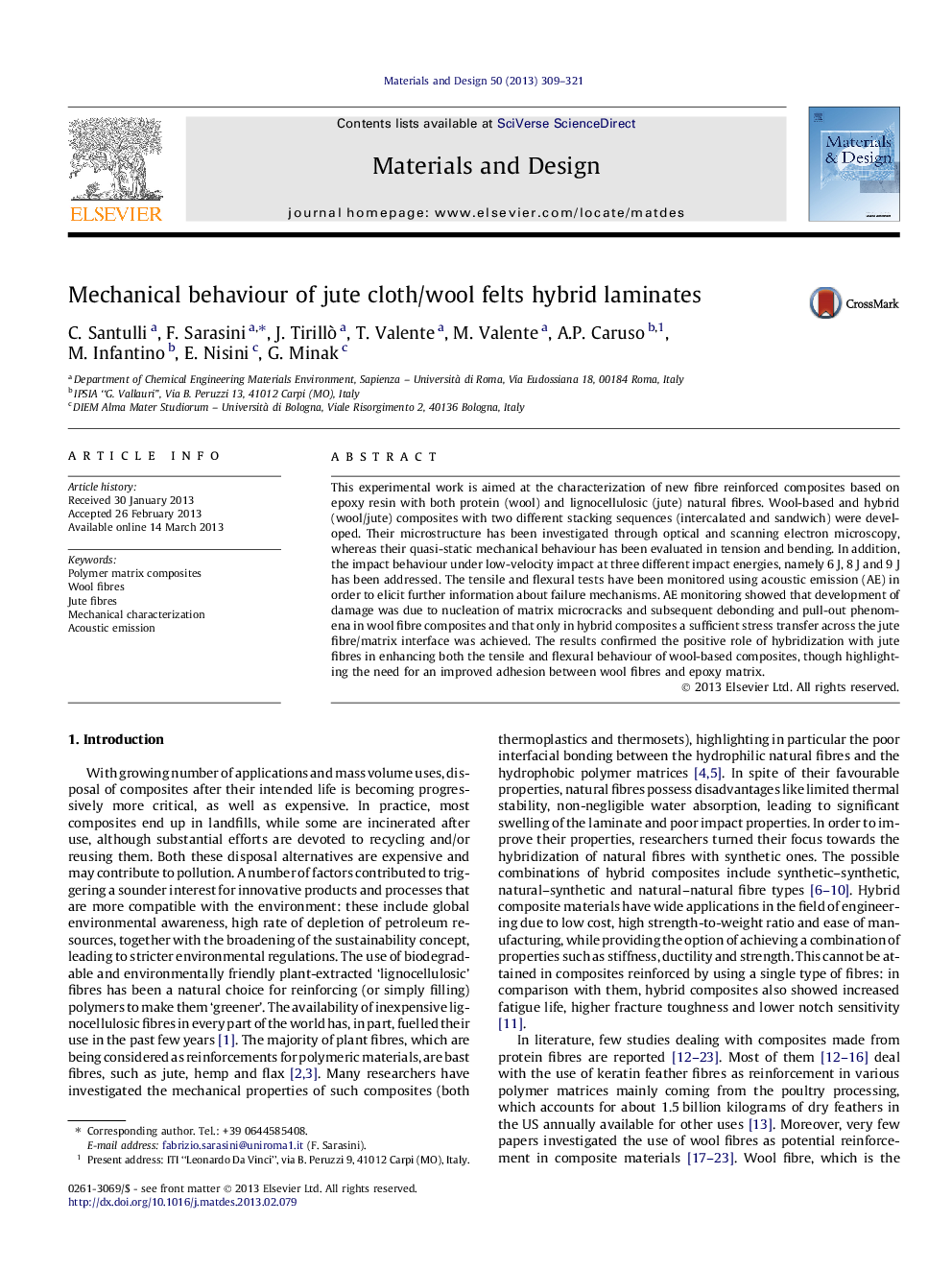| Article ID | Journal | Published Year | Pages | File Type |
|---|---|---|---|---|
| 829942 | Materials & Design (1980-2015) | 2013 | 13 Pages |
•New fibre reinforced hybrid composites with wool and jute fibres were manufactured.•Effect of two different stacking sequences on mechanical behaviour was investigated.•The impact performances of wool/jute interply hybrid composites were studied.•Hybridization with jute significantly enhanced mechanical properties of wool composites.
This experimental work is aimed at the characterization of new fibre reinforced composites based on epoxy resin with both protein (wool) and lignocellulosic (jute) natural fibres. Wool-based and hybrid (wool/jute) composites with two different stacking sequences (intercalated and sandwich) were developed. Their microstructure has been investigated through optical and scanning electron microscopy, whereas their quasi-static mechanical behaviour has been evaluated in tension and bending. In addition, the impact behaviour under low-velocity impact at three different impact energies, namely 6 J, 8 J and 9 J has been addressed. The tensile and flexural tests have been monitored using acoustic emission (AE) in order to elicit further information about failure mechanisms. AE monitoring showed that development of damage was due to nucleation of matrix microcracks and subsequent debonding and pull-out phenomena in wool fibre composites and that only in hybrid composites a sufficient stress transfer across the jute fibre/matrix interface was achieved. The results confirmed the positive role of hybridization with jute fibres in enhancing both the tensile and flexural behaviour of wool-based composites, though highlighting the need for an improved adhesion between wool fibres and epoxy matrix.
